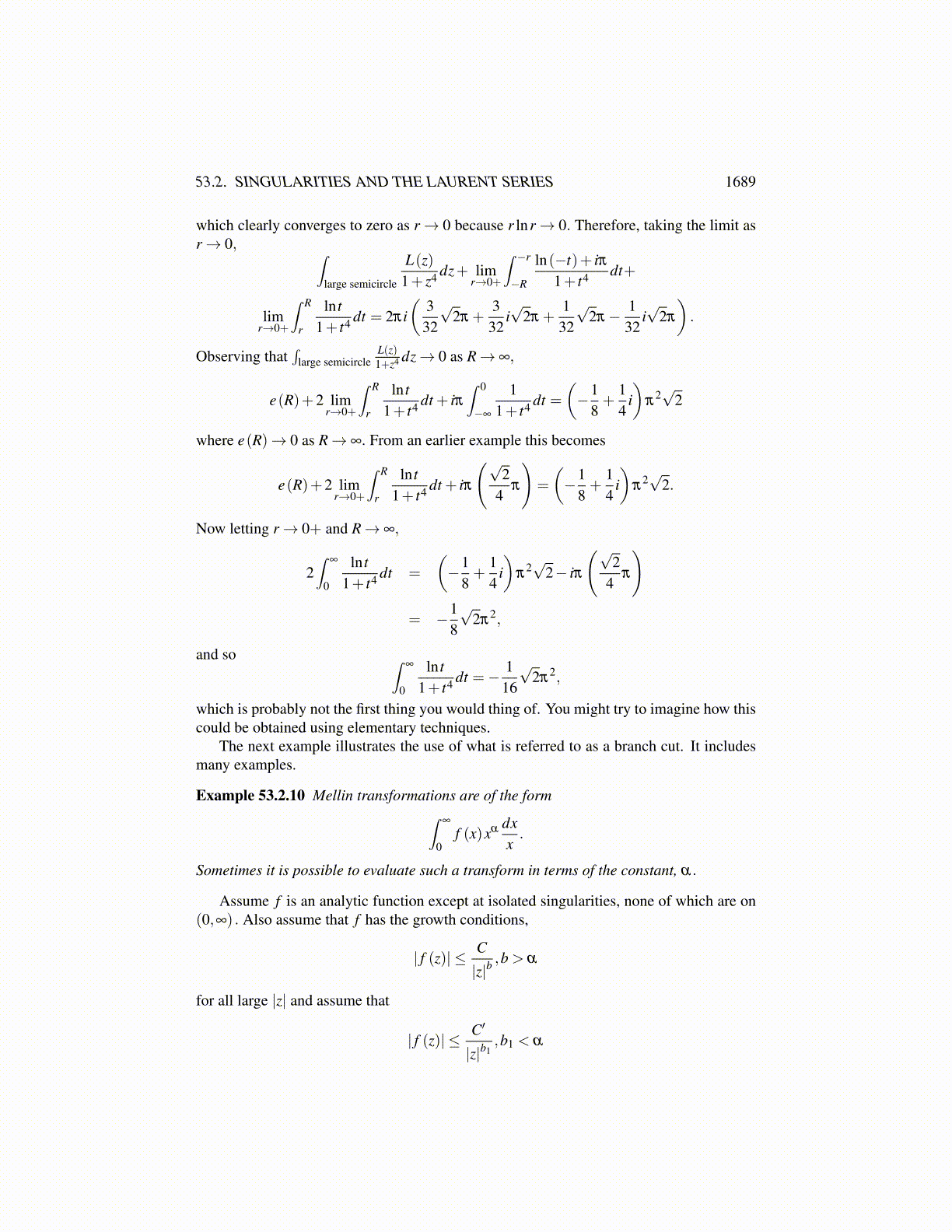
53.2. SINGULARITIES AND THE LAURENT SERIES 1689
Similarly we may find the other residue in the same way
Res(
f ,−12
√2+
12
i√
2)
= limz→− 1
2√
2+ 12 i√
2
(z−(−1
2
√2+
12
i√
2))
11+ z4
= −18
i√
2+18
√2.
Therefore, ∫Γr
11+ z4 dz = 2πi
(−1
8i√
2+18
√2+(−1
8
√2− 1
8i√
2))
=12
π√
2.
Thus, taking the limit we obtain 12 π√
2 =∫
∞
−∞
11+x4 dx.
Obviously many different variations of this are possible. The main idea being that theintegral over the semicircle converges to zero as r→ ∞.
Sometimes we don’t blow up the curves and take limits. Sometimes the problem ofinterest reduces directly to a complex integral over a closed curve. Here is an example ofthis.
Example 53.2.8 The integral is ∫π
0
cosθ
2+ cosθdθ
This integrand is even and so it equals
12
∫π
−π
cosθ
2+ cosθdθ .
For z on the unit circle, z = eiθ , z = 1z and therefore, cosθ = 1
2
(z+ 1
z
). Thus dz = ieiθ dθ
and so dθ = dziz . Note this is proceeding formally to get a complex integral which reduces
to the one of interest. It follows that a complex integral which reduces to the one desired is
12i
∫γ
12
(z+ 1
z
)2+ 1
2
(z+ 1
z
) dzz
=12i
∫γ
z2 +1z(4z+ z2 +1)
dz
where γ is the unit circle. Now the integrand has poles of order 1 at those points wherez(4z+ z2 +1
)= 0. These points are
0,−2+√
3,−2−√
3.
Only the first two are inside the unit circle. It is also clear the function has simple poles atthese points. Therefore,
Res( f ,0) = limz→0
z(
z2 +1z(4z+ z2 +1)
)= 1.